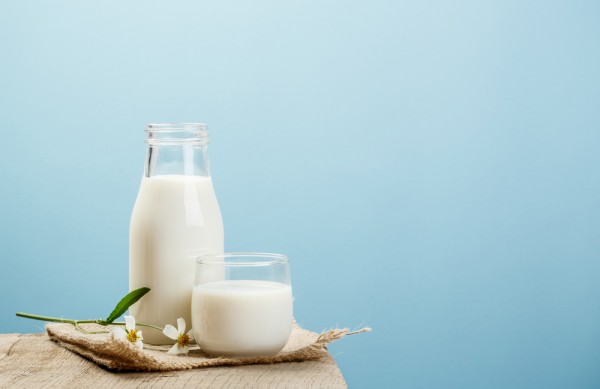
For most Americans, milk is a part of everyday life. In fact, the average person is said to consume approximately 18 gallons of cow’s milk per year, 40% of which is poured on cereal.
Milk is especially popular with children, who are estimated to consume 60% of the milk in the US. However, milk is actually falling in popularity. While in the 1970s, the average American could be expected to drink around 1.5 cups of milk per day, the figure today is about 0.8 cups – over a 37 percent drop.
This effect is even more pronounced on whole milk – consumption of full-fat milk has fallen precipitously by over 78%. The reason for this is simple. There are growing concerns about the health impact of milk – especially full-fat milk.
The primary concern of the health impact of milk stems from lactose intolerance. Human beings simply weren’t meant to consume milk and dairy products beyond childhood – and our bodies adjust accordingly. Simply put, lactose intolerance is natural – it’s lactose tolerance that is unnatural.
To understand this, let’s take a deeper look at lactose tolerance and intolerance.
Understanding Lactose Tolerance And Intolerance
Lactose is a specialized sugar that is found in milk and in dairy products – and it requires a specialized enzyme called lactase to break down in the stomach. Without lactase to break it down, lactose will continue through the digestive tract to the small intestine, where it is broken down by bacteria, rather than enzymes.
Lactase is produced naturally in babies and small children – those who are breastfeeding, for example, but as time goes on, the natural processes of the body stop creating lactase, leading to an inability to correctly break down dairy products.
This leads to a poorer digestion process and can result in nutritional deficiencies, bloating, flatulence, stomach cramps, and even diarrhea. Globally, around 70% of people lack adequate lactase, causing varying degrees of lactose intolerance. The effects of this lactose intolerance can range from harmless gas and bloating to terrible bouts of intestinal and gastric distress.
“Wait,” you might say. “I drink milk and it doesn’t give me any problems! Why don’t I suffer from lactose intolerance?”
Well, the human body is nothing if not adaptable. It’s estimated that, thousands of years ago, large populations of humans who relied primarily on livestock like sheep, cows, and other dairy-producing mammals for food began to eat and drink dairy products, causing a mutation in the gene that allows for lactase production, and allowing these individuals to continue to produce lactase past their childhood, and correctly break down lactose.
This is especially common in Europeans. About 85-98% of all people of European descent are estimated to have enough lactase production to easily digest milk and dairy products. This can be contrasted with some Asian populations in which only 5% of people can digest milk and dairy, leading to rates of up to 95% lactose intolerance.
What Does This Mean For Me?
If you drink milk, enjoy it, and don’t suffer any ill effects, the above information doesn’t really affect you. You can continue drinking milk and eating dairy products – because you likely have excellent lactase production, and are enjoying the full nutritive effects of cow milk.
However, if you have ever felt bloated, gassy, or generally out-of-sorts after consuming a lot of dairy products, it’s quite possible that you’re somewhat lactose intolerant. As mentioned above, lactose intolerance is often quite mild – it’s only in more extreme conditions that you suffer from conditions like diarrhea.
Still, lactose intolerance shouldn’t be ignored. One of the primary reasons that lactose intolerance is important is because it affects nutrient absorption. If you drink a big ol’ glass of milk to get your calcium for the day and your stomach can’t digest it properly, you miss out on most of the nutrients that milk provides.
While your general practitioner can diagnose you with a breath test, it’s much easier to just get an idea of how your body handles large amounts of lactose. The best test you can give yourself to understand your level of lactose tolerance is to simply drink a large glass of milk – and see how you feel.
If you feel normal, chances are that you’re lactose tolerant. If you begin to feel bloated or gassy, you may be slightly lactose intolerant – and if you have diarrhea and serious gut pain, you’re lactose intolerant, and should stop drinking milk, or get a lactose-free product like Lactaid.
So, Should I Drink Milk?
Despite the fact that milk has gotten less popular over the years, it’s still a healthy, viable source of proteins, fats, and calcium, and certainly a great beverage choice for those who can digest lactose. Even most lactose-intolerant people can drink around 50-375ml of milk a day with few problems.
So, despite the falling popularity of milk as a beverage, there’s no reason to stop drinking it unless it makes you feel bad. Though lactose intolerance may be the natural state of the body, lactose tolerance is an equally-natural adaptation that’s been passed down for thousands of years.
So next time you’re on your lunch break at your hospital, don’t shy away from the bottle of 2% milk in the fridge. If you can handle the lactose, milk is still a fantastic way to get the nutrients that your body needs, to thrive.

















